
Sponsored Ads
|
» Home
» Science » Botanical Garden in Zagreb founded in 1889, through the lens of Nikola Piasevoli
» Home
» People » Botanical Garden in Zagreb founded in 1889, through the lens of Nikola Piasevoli
» Home
» Environment » Botanical Garden in Zagreb founded in 1889, through the lens of Nikola Piasevoli
» Home
» Entertainment » Botanical Garden in Zagreb founded in 1889, through the lens of Nikola Piasevoli
» Home
» Education » Botanical Garden in Zagreb founded in 1889, through the lens of Nikola Piasevoli
» Home
» Culture And Arts » Botanical Garden in Zagreb founded in 1889, through the lens of Nikola Piasevoli
| Botanical Garden in Zagreb founded in 1889, through the lens of Nikola Piasevoli |
| By Nikola Piasevoli |
Published
01/4/2015
|
Science , People , Environment , Entertainment , Education , Culture And Arts
|
Unrated
|
|
|
|
Victoria amazonica water lilly and Sophora japonica-pendula among great attractions of the Botanical Garden in Zagreb, part 1
Nikola Piasevoli, Croatian amateur photographer in front of Sophora japonica in the Botanical Garden, Zagreb, in winter.
Photo by Goran Jakuš/Pixsell.
Nikola Piasevoli studied German and Italian languages at the University of Zagreb, Faculty of Letters in the city of Zadar. His passionate hobby is photographing nature, in particular, the Botanical Garden in Zagreb, olive trees in the village of Sali on his native island of Dugi otok (that is, on the "Long Island"). He used to visit the Garden with his granddaughters Laura and Nora.
|
Botanical Garden in Zagreb, Croatia, founded in 1889
Of the 4.7 hectares of the Botanical Garden’s total area, the greatest part is occupied by the arboretum, developed in the style of the English landscape garden, in which we grow woody plants (trees and shrubs) from various parts of the world.
The flower parterre with decorative herbaceous plants (annuals and perennials) and roses, in the western part of the Garden near the glasshouses, is constructed in the French style characterised by strict geometrical lines.
Indigenous plant species (representatives of the flora of Croatia) are grown in groups planned according to plant geography (rock gardens).
Tropical and subtropical plants and plants needed for research work are grown in the greenhouses (a total of 14).
Marsh plants can be seen in the artificial lakes and pools on the parterre.
In the systematic field in the southeast part of the Garden we grow plants meant for students and for university lectures.
The park of the Botanical Garden has been laid out in the style of the English landscape garden, in which winding paths border smaller areas of irregular shape (a total of 53 plots or fields). In the park we grow trees and shrubs from various parts of the world – a total of about 1000 different taxa, distributed largely according to kinship. The woody plants in the park come on the whole from areas with a temperate continental climate, which have on the whole acclimatised successfully to the polluted air of the city-centre. A smaller number of the species planted are susceptible to very low winter temperatures (like the fig and laurel), and we protect them by piling dry leaves around them or maize stalks, or cover them with a special foil for protection against frost. More sensitive woody plants from the warmer parts of the world are grown in pots, and during winter are put into premises in which the temperature never drops below zero centigrade (oranges, camellias, oleanders). Palms and some kinds of rubber plant and other tropical and subtropical woody species overwinter in the glasshouses, in which the temperature never drops below +5 °C or even +10 oC, and only in the summer do we take them out into the open air.
Croatian flora
In our country a great number of different plant species grow, together constituting the flora of Croatia. According to our most up to date information, 5500 taxa of higher plants grow in Croatia. Considering the area of the country, this really is a great many. The floras of much larger countries are less numerous than that of Croatia; in Spain, for example, there are 5048 taxa growing, in France 4630 and in Germany 3203. Whence the richness of our flora? Croatia is a distinctly southern European country, located at the borderline between the continental and the Mediterranean climates, and of the eastern and the western Mediterranean floras. As well as this, our area was, in periods of the greatest glaciation, mainly spared, and thus some members of the primeval flora, relicts, as they are called, have been preserved. The combination of a very diverse relief - high mountain massifs, karst poljes, river valleys and a highly indented coastline with its many islands has also helped to bring about the creation of a large number of taxa, among which the endemics account for almost ten percent. For this reason Croatia is one of the richest of European countries.
Source hirc.botanic.hr
| 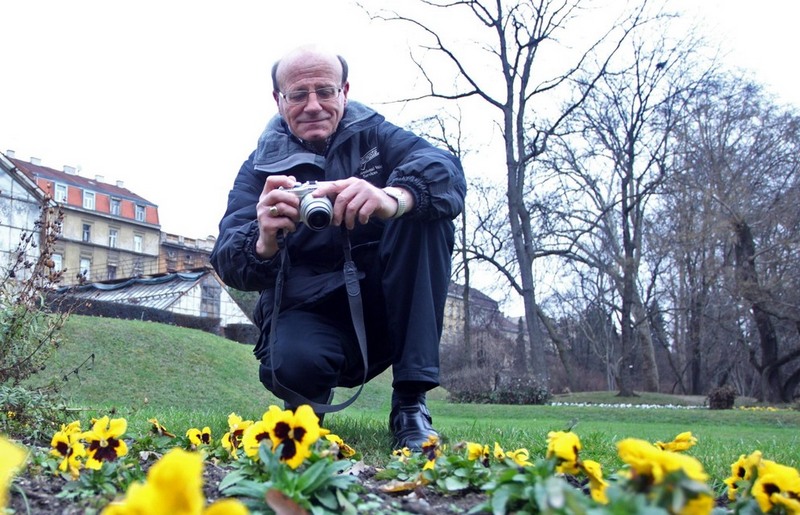 Nikola Piasevoli enjoying in the Zagreb Botanical Garden. Photo by Goran Jakuš/Pixsell 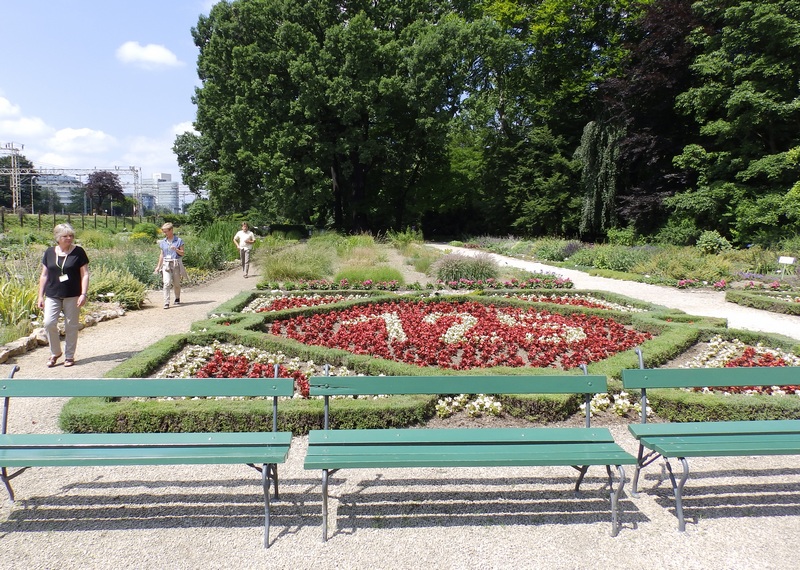 125 125th Anniversary of the Botanical Garden in Zagreb, 1889-2014
History of the Botanical Garden i Zagreb
The need to found a botanical garden in Zagreb was mooted in 1876 by the then rector of the University, Professor S. Spevec, giving at the same time enormous support to Professor B. Jirus, who attempted to put this idea into practice. Jirus carried out many of the preliminary operations, but in 1886 he had to return to Prague. Professor A. Heinz succeeded him in the chair of botany, and in 1889 the Royal National Government assigned him the task of drawing up a plan and laying out the botanical garden (for at that time Croatia was a part of the Austro-Hungarian Empire). He completed the plan in collaboration with the Head Gardener, V. Durchanek. The year 1889, when the plan was drawn, is held to be the year in which the Botanical Garden was founded, and Professor Heinz is always considered its founder.
Works laying out the garden started in 1890. It was then that the gardener's lodge (today the director's building) was put up, and the Garden was enclosed with a wooden fence that was after replaced with a decorative wrought iron railing. The first works on the land started in 1891, and the first planting was done in 1892.
The garden was designed and constructed in the landscape style, with free-standing clumps of trees and winding paths, with only the flower beds having strictly symmetrical lines.
In 1911 a marine aquarium was installed in the Botanical Garden; however, this is no longer in existence.
As well as the glasshouses, the garden has the following buildings: the director's or administrative building, in Art Nouveau style, the one-time gardener's lodge; the building of the Botanical Institute (the one-time Physiological Laboratory); the old exhibition pavilion (a valuable and authentic item of pavilion architecture of 1891); a public lavatory (an example of a small municipal structure from the end of the 19th century); the building of the Botanical Institute, begun but never completed; the old storeroom (also from the end of the 19th century); the Water Company boiler room building (built in the 1930s); the drinking water fountain; a porch for students; and a small gazebo, acquired as a gift to mark the first centenary.
In 1927 the Croatian Plant Geography Group was set up – later called the Karstic Group. The plan for this was designed by the celebrated Croatian botanist Professor Ivo Horvat. It is planted with indigenous species from various regions of Croatia. By 1985, sub-Mediterranean, Mediterranean, Alpine and West European rock gardens had been established.
At the time of its foundation, the Botanical Garden, in company with the Botanical and Physiological Institute, belonged to the Mathematics and Natural Sciences Department of the Faculty of Philosophy; however, since 1946, together with the Botanical Institute, part of the Biological Department, it has been a part of the Faculty of Science, which was founded that very same year. Just a few years after its foundation, the Botanical Garden was in possession of a very rich collection of plants. But in the course of time, because of a number of circumstances, it was much reduced. It was most impoverished in the post-World War II period; however, with the arrival of a warden with great expertise, Dr Sala Ungar, within a period of a few years it was once again enriched and in terms of numbers achieved practically the maximum possible when the area of the garden is considered.
As for some of the major projects of the Garden in the second half of the last century, it is worth mentioning the construction of a new glasshouse in 1985; the restoration of the iron railings and the toilet in 1986; the construction of a new boiler room for the heating of the glasshouses (1989); the construction of the domed glasshouse west of the parterre (1995); and the new glasshouse for the overwintering of plants (1996).
Large projects from 2000 incloode renovation of the old glasshouses, fountains, wrought iron railing, and especially the old exhibition pavilion (completed in 2007).
Source hirc.botanic.hr
|
Opening hours and no entrance fee!
The Garden is open to public from 1 April to 1 November, on all holidays except Assumption day (August 15) and Easter!
It is closed during the winter.
monday-tuesday 9.oo-14.3o
There is no entrance fee !
Address and contact:
Botanicki vrt PMF-a, Uprava
Marulicev trg 9a
HR-10000 Zagreb
Croatia
tel: (01) 48 98 060
fax: (01) 48 98 066
mail: botgarzg@botanic.hr
How come there is no entrance fee?
The grounds on which the Garden was set in 1889 were a gift from the City of Zagreb to the University. The only compensation for it was an agreament to open the doors of the Garden to the visitors, free of charge. We still hold to this 115 years old tradition.
| 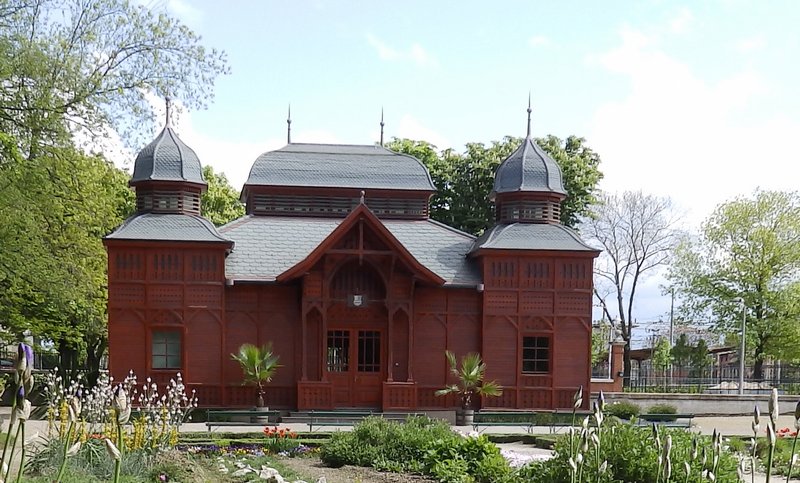 Izložbeni paviljon - Exhibition pavillion  Kesten u cvatu - Blossoming chestnut 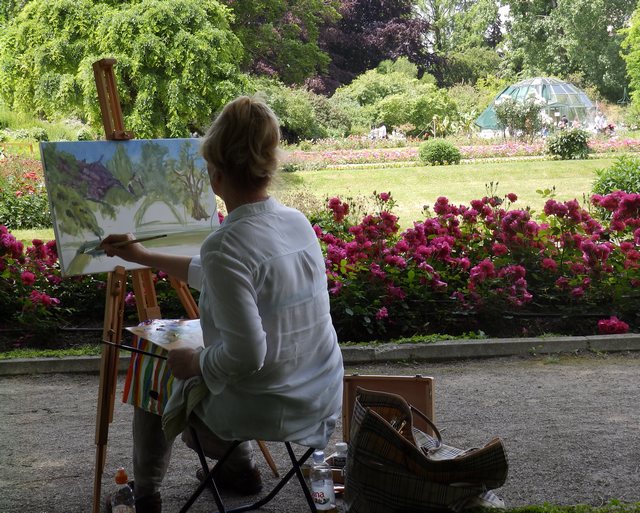 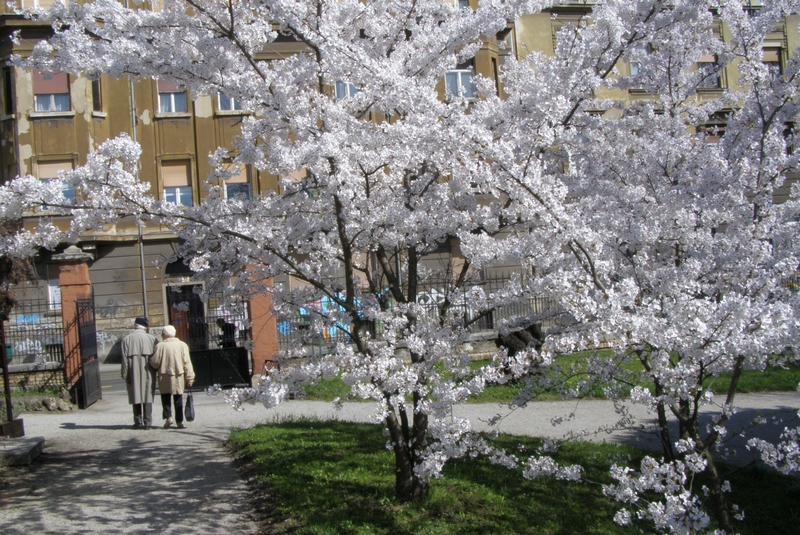 Japan Japanska trešnja - Japanese cherry 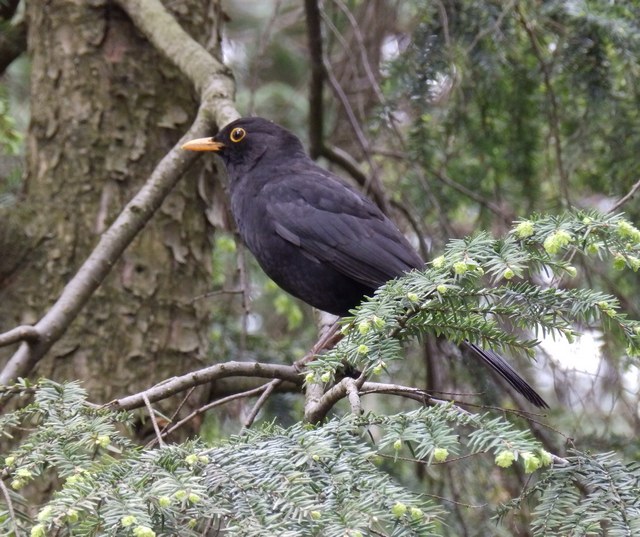 Kos - Blackbird 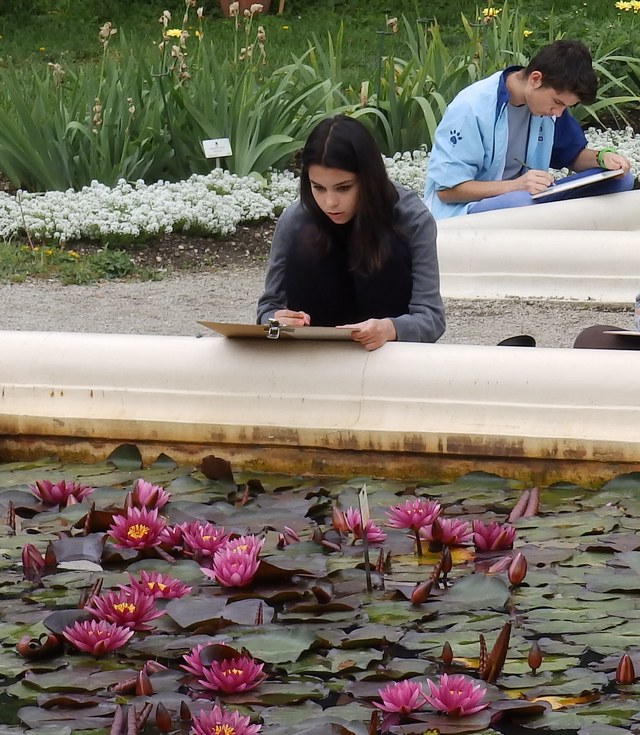 Lopoči - Water lilies Croatian Coat of Arms at the main entrance to the Botanical Garden in Zagreb  Lopoči - Water lilies 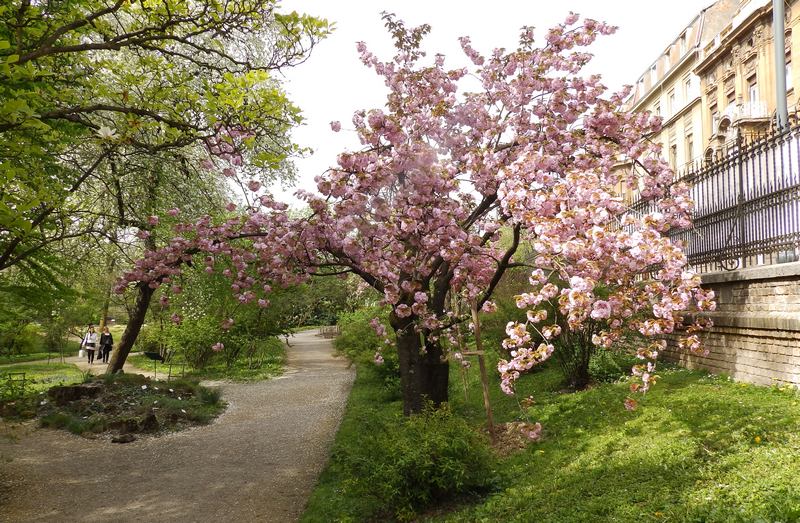 Magnolija 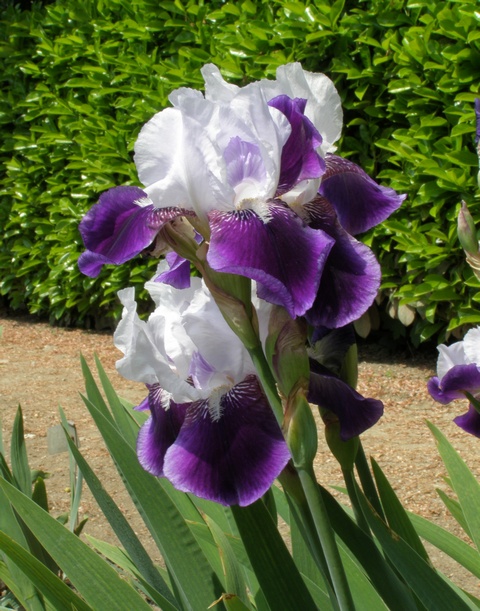 Perunika - Iris, national flower of Croatia Tulipani - Tulips 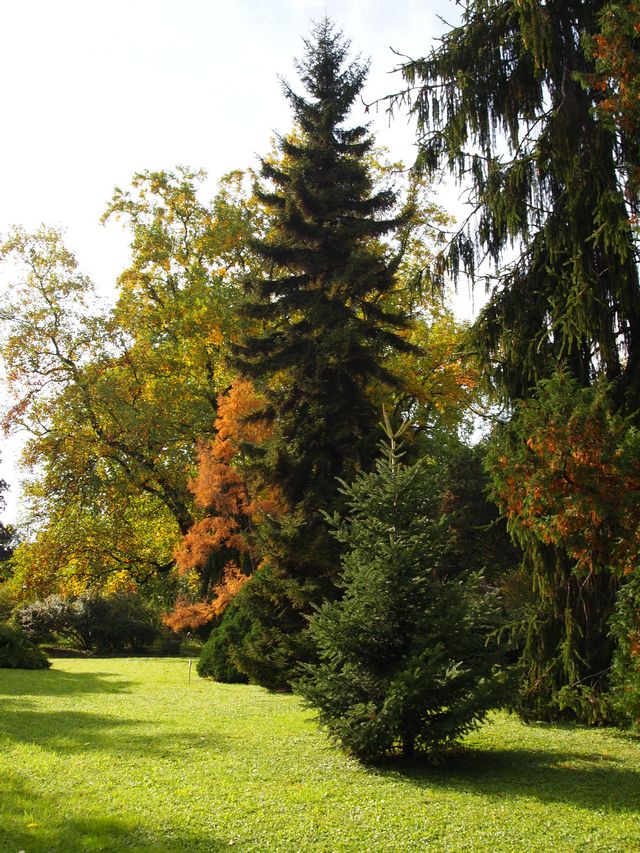 Crnogorica - Conifers 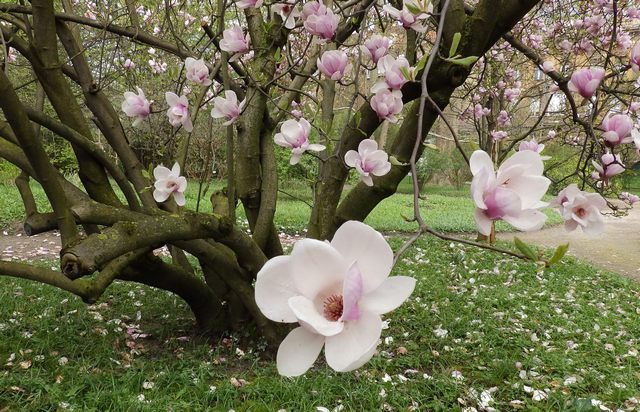 Magnolija - Magnolia Makovi, časna sestra Ana Jukić - Poppies, s. Ana Jukić
Amazonski lopoč - Victoria amazonica
 Amazonski lopoč - Victoria amazonica (Water lily) i rub lista (boundary of the leaf) Victoria amazonica - Amazonski lopoč Please, go to the next page below.
|
Pages: « Back 1 2 3 4 5 6 Next »
|
Comments
-
Comment #1
(Posted by Ivancica)
Very nice! I must visit the garden on first occasion!!
Submit Comment
|
|